Dominican Republic
Is it Safe to Travel in the Dominican Republic? 9 Important Safety Tips & Crime Overview
A question I frequently get is, “Is it safe to travel in the Dominican Republic?” As a Dominican New Yorker who has ventured to over 55 countries, these are my insights into Dominican Republic safety as both a traveler and a Dominican. I’ll touch on both recent controversies and practical safety tips for visiting the Dominican Republic.
Please note: It’s important to note that safety is a subjective and relative concept. What may be deemed “safe” for one person could be perceived as risky for another. And one region doesn’t represent the entire country. For example, does the Bronx or Nashville represent the entire USA travel experience? Nope. And every country can have its crime and safety issues from Iceland’s powerful and tempestuous nature to the United States’ mass shootings.
Table of Contents
I. Dominican Recent News & Safety Controversies
Recent Tourist Deaths Controversy

In 2019, Jimmy Kimmel’s comparison of traveling to the Dominican Republic with being in war-torn Syria ignited a storm of controversy. Critics on social media slammed the host for his stark analogy, especially during a period when the Dominican Republic was grappling with international media scrutiny over the mysterious deaths of several American tourists, most notably in Punta Cana hotels.
What exactly unfolded? The year witnessed a series of American tourist fatalities that sparked global alarm and led to an FBI investigation. These deaths, shrouded in ambiguity at various resorts, fueled speculation over their causes, including concerns over potentially tainted alcohol. Nevertheless, the FBI’s investigation determined these fatalities resulted from natural causes, corroborating the Dominican authorities’ initial conclusion that these incidents were unrelated and stemmed from health issues like heart attacks and pulmonary edema.
CNN reported in the same timeframe that these fatalities, which commenced in June 2018, were attributed to sudden health crises involving respiratory difficulties, heart attacks, and pre-existing conditions. Additionally, other visitors reported ailments and symptoms such as diarrhea, suspecting food poisoning or exposure to potential pesticides or viruses, with many of those who fell ill or died having consumed alcohol prior.
VOX highlighted in June 2019 that forensic analysis suggested the symptoms of many victims could indicate methanol poisoning, potentially resulting from minimal chemical exposure. In a subsequent update in October, ABC News reported that toxicology tests conducted by the FBI confirmed three of these deaths were due to natural causes.
The Dominican Republic’s Tourism Minister, Javier Garcia, addressed these incidents as isolated events. He urged the public to contextualize these occurrences, emphasizing that millions visit the country annually with the vast majority experiencing no health issues or fatal incidents, thereby reinforcing the country’s appeal as a beloved tourist destination.
Violent Crimes in the Dominican Republic
Between 2013 and 2017, the Dominican Republic witnessed 23,159 accidental and violent deaths, with homicides (both intentional and unintentional) accounting for 8,657 of these incidents, or 37.38%. In 2018 alone, the country saw 3,895 deaths, with 1,389 classified as homicides (involving 1,224 men and 165 women), making up 35.66% of that year’s total.
Despite concerted efforts to address this issue, the national homicide rate experienced a modest decline from 11.98 in 2016 to 10.40 in 2018. The primary methods of homicide were firearms, followed by bladed weapons, which together constituted the majority of cases.
Most of the crimes here are petty crimes and are within locals. These mostly occur in urban areas such as the two major cities: Santo Domingo and Santiago, but tourist areas are not much affected since these are usually policed.
The Centers for Disease Control and Prevention likened the risk for crime in the Dominican Republic to major cities in the United States. They also stated that while more serious assaults occur occasionally, most crimes that affect tourists only involve petty crime such as robbery or pickpocketing.
US State Department Safety Warnings of the Dominican Republic

Currently, the U.S. State Department’s has issued a level 2 advisory warning travelers to the Dominican Republic, to “exercise increased caution” due to the prevalence of violent crimes, including armed robbery, homicide, and sexual assault.
The report also warns of the risks associated with date-rape drugs, recounting incidents where U.S. citizens were victimized by individuals they encountered through dating apps or were subjected to drugging at resorts, underscoring the need for heightened vigilance.
However, it’s important to adopt a nuanced perspective regarding this advisory. Countries around the world also issue travel advisories to their citizens going to the United States, due to concerns over gun violence and mass shootings. Should we not travel to the USA, then?
The likelihood of experiencing such incidents often involves being in the wrong place at the wrong time. Or it’s between people who know each other. This context doesn’t diminish the validity of the advisories but suggests that with informed precautions and situational awareness, travelers can still safely enjoy their visit to the Dominican Republic.
Anti-Blackness & the Rise of Neo-Fascism in the Dominican Republic

The issues of anti-Blackness and the rise of neo-fascism in the Dominican Republic, though deeply rooted in the nation’s colonized and imperialized history, may seem distant from the typical tourist experience. However, these underlying tensions can have broader implications for travelers, particularly those who are phenotypically darker-skinned.
Visitors might find themselves navigating a complex landscape where racial prejudices and the presence of extremist ideologies could impact their interactions and overall experience in the country. For instance, they may get confused with Haitians and get deported in mass raids.
It’s important for tourists to be aware of these dynamics for their safety. Being informed can also guide tourists in choosing where to spend their money, supporting businesses and communities that advocate for inclusivity and against discrimination.
II. What to Know – Tourism Safety in the Dominican Republic
Driving is the Most Dangerous Part of the Dominican Republic

I’d say the most dangerous part of traveling in the Dominican Republic is the driving experience. Don’t believe me?
According to El Dinero and World of Statistics, the Dominican Republic leads globally in traffic-related fatalities as of 2021, recording 65 car deaths per 100,000 inhabitants. Motorcycles, a significant contributor to these accidents, saw a 6.6% increase in registrations in 2021.
The National Office of Statistics highlights that of 4,391 deaths in the Dominican Republic in 2021, 42.7% (1,874 fatalities) were driving-related, marking an 8.1% increase from 2020. The Pan American Health Organization also places the Dominican Republic among the top 5 countries with the highest traffic accident death rates from 2000 to 2019.
Here are some of my biggest tips for driving/being driven in DR:
- We recommend NOT renting a car in Santo Domingo or Santiago, unless you experience driving in these cities. Especially Santo Domingo, is another beast.
- If you do rent a car,make sure it is in good condition.
- Ask your private driver ahead of time about his/her model and year.
- On off-the-beaten-path roads, you NEED a 4×4. Some of those cliffside mountain rounds can have your car skidding backwards without proper traction.
- During your Dominican Republic road trip, avoid driving at night. Especially at sunset in the countryside, this is when cows can pop out into the roads.
- The other thing to look out for, are the other cars around you. Some people are driving 40 year old cars. Herein, lies bigger dange if their tire pops or a truck’s cargo falls out.
- Remember, keep your car door locked, windows up, and your belongings out of sight, especially in the face of a red traffic light.
Most Crimes are in Santo Domingo and Santiago (Biggest Cities)

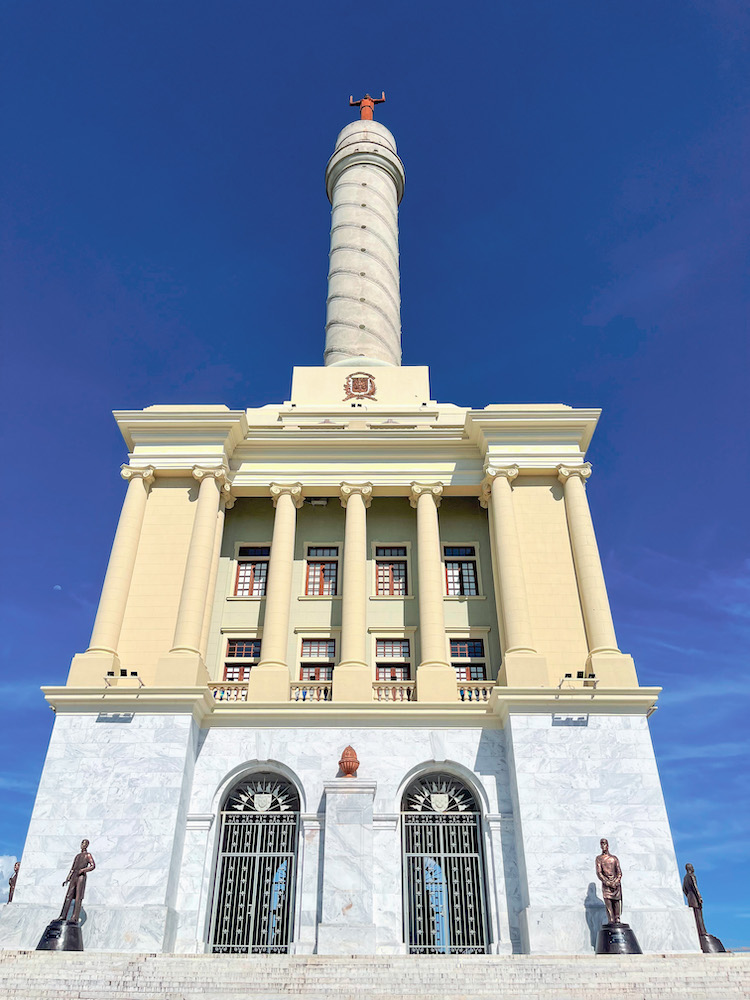
Most crimes in the Dominican Republic happen in the major cities of Santo Domingo and Santiago. To avoid issues here, take Ubers from door to door, except for in La Zona Colonial in Santo Domingo. Stay vigilant and apply safety precautions as you would when riding the New York City subway.
In contrast, the community values of smaller towns make them a lot safer because everyone knows each other, so people wouldn’t dare get caught doing anything.
Such is the case in places like Monte Cristi, Pedernales, Cabarete, where we walked around at night (to restaurants or the beach) and locals didn’t bat an eye about it. Of course, still be careful anywhere, but you get it. Towns > Cities.
Food Safety in the Dominican Republic Travel
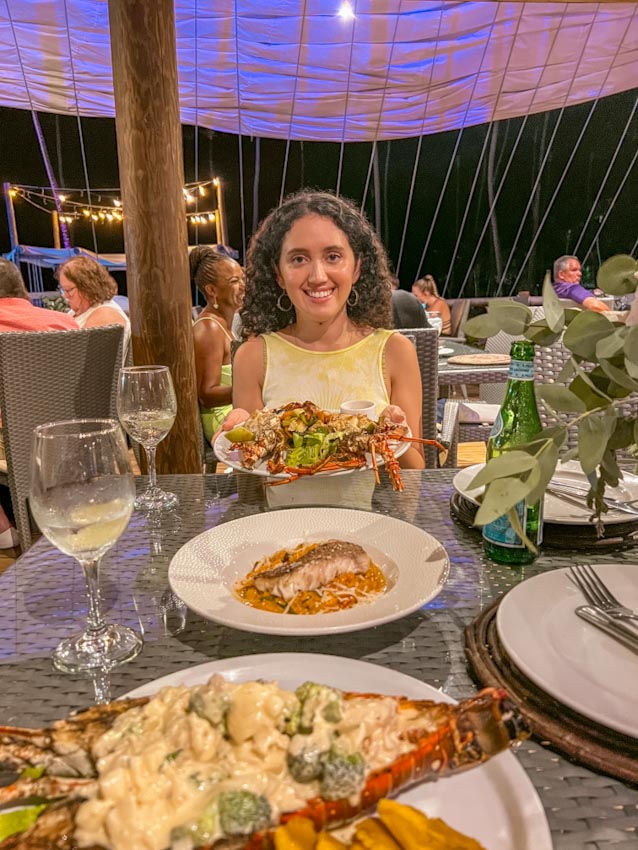

I cherish our Dominican food cuisine. However, from experience, I feel like the food here is the second most riskiest thing to be cautious. Like in most other countries, you have to be careful with what you put in your mouth, from alcohol to salads.
Parasites, such as amoeba are too common here. In fact, I’ve gotten this twice in DR.Here’s how to avoid getting sick in the Dominican Republic:
- Avoid street foods or any places that reuse oil for cooking.
- NEVER drink tap water nor salads that are washed with tap water.
- Skip the ice, just to be triple safe.
- Opt for cooked foods over raw: Since cooking can kill most bacteria and parasites, it’s safer to eat foods that have been thoroughly cooked, especially meats and seafood. Avoid raw or undercooked dishes when you’re unsure about the food preparation practices.
- Choose restaurants wisely: Look for eateries that are busy with locals. A high turnover means the food is likely fresher. Also, checking online reviews or asking for recommendations can lead you to places known for cleanliness and good food safety practices.
- Use bottled water for brushing teeth: To avoid contact with tap water, use bottled or purified water for brushing your teeth as well. It’s an easy step to overlook but can make a difference in avoiding gastrointestinal issues.
- Bring these charcoal pills, if you feel something funny coming on take them.
Alcohol in the Dominican Republic & Recent Controversy

In recent news regarding alcohol safety in the Dominican Republic, there have been significant concerns about adulterated alcohol. An outbreak of methanol intoxication due to the consumption of tainted alcohol resulted in 127 deaths and affected 326 people in the country, as reported by Dominican Today on April 28, 2021.
The investigation identified two possible sources: homemade adulterated drink known as “clerén” and a type of frozen cocktail, with clerén being an illegal alcoholic beverage.
This situation has prompted increased vigilance, especially in tourist destinations, to prevent the distribution of alcoholic beverages of unknown origin and components unfit for human consumption.
Solution: When it comes to drinking, don’t consume alcohol alone or with new acquaintances. Only purchase alcohol from reputable liquor stores or larger supermarket chains to ensure that they are not counterfeit. You can also double check labels of liquor bottles for authenticity. Do not leave your drinks unattended as it may be drugged by someone.
Sexual Harassment & Sexism


As a solo woman traveler, you can navigate our beautiful country safely but with both openness and caution, especially given the local socio-cultural challenges surrounding gender-based violence, including sexism (machismo).
From personal experience and a dive into recent stats, the Dominican Republic, unfortunately, mirrors a wider Latin American issue with one of the highest rates of femicide.
In 2022, there were 72 reported femicide victims (according to Statista), a stark reminder of the ongoing struggle against gender-based violence here.
Though these are usually among people who know each other, it’s a telling statistic, urging us to tread with care and awareness.
Here’s how I make my journey safer as a solo woman traveler in DR:
- Ask women for directions/help, not men, if you’re lost or have a question. This is one of my biggest solo female travel hacks throughout my travels across 55+ countries.
- Street Harassment is huge here, especially in the bigger cities. Consider taking Ubers between places for safety and to avoid unwanted attention.
- Dress mindfully: Unless you’re walking around with another man or in a group, dressing “too nicely” or revealing, can get you an insane amount of attention. While I believe in the freedom to wear what we want, lowering the volume in what I wear has eased my way through the streets of Santo Domingo or Jarabacoa.
- Use your intuition: act the same way you would on the NYC subway. Be careful of your surroundings and always listen to your intuition.
- Use Find My Friend: Always have it on so you have a friend/relative that can track you.
- Be Emergency Ready: I keep a list of emergency contacts, including local police and tourist assistance, easily accessible.
Be open to new experiences, but always with a plan for safety. This balance has made all the difference for me traveling the world from Iceland to DR!
Most Tourist-Related Crimes are Petty Theft

You should always take precautions when traveling, anywhere, period. And like almost everywhere else, most crimes tourists experience in the Dominican Republic are petty theft.
- So always keep a watchful eye and watch your surroundings when traveling to tourist spots and cities for pickpockets.
- Don’t flash signs of wealth such as expensive clothes and accessories.
- Avoid carrying valuable items such as expensive gadgets as these will attract attention.
- If possible, refrain from carrying your bag slung over your shoulder as it makes you an easy target for thieves on motorcycles.
- And, passport bros, if you go looking for trouble, you’ll find it! Stop traveling to poor countries to exploit desperate kids!
Airbnbs & Hotel Safety


Only stay in Airbnbs or Vrbos with lots of reviews and at least 4.90 stars. Anything 4.7 and under, skip. Make sure the one you’re checking into has a “watchiman” aka a security person outside, as sadly, it is not uncommon for people to break into Airbnbs.
There are a lot of amazing places to stay in the Dominican Republic. Resorts are pretty safe. But be smart with the staff. A lot of tourists flirt with the staff, and sometimes that leads to marriage.
Others see this happening, and then try to shoot their shot with others to marry into better privilege (understandably). But not everyone has the best intention, so be smart. If it seems too good to be true, it probably is.
Women, again, be careful with flirtatious men if that makes you uncomfortable. Eye contact or coming on too friendly can welcome unwanted attention with men, especially in Latin America.
Solo Travel in the Dominican Republic?

Solo travel in the Dominican Republic can be safe, yes, with proper precautions like everywhere else. Remember there are neighborhoods with higher crime rates, so do your research beforehand when planning your Dominican Republic itinerary.
Popular tourist areas like La Zona Colonial (in Santo Domingo) or Los Corales (in Punta Cana), always feel super safe. But obviously, don’t go walking around at night flashing your gold jewelry in a dark alley–anywhere!
And use reliable transportation options, such as Uber, which is the best choice for getting around because you get to see their reviews beforehand.
If you’re a solo female traveler, ALWAYS ask other women for directions or questions instead of men. This is my biggest tip as a solo female traveler who has visited 55+ countries!
- Avoid sketchy neighborhoods
- Be mindful at nighttime
- Use Uber (with lots of reviews/high ratings)
- Ask women for any questions/directions
Natural Disasters in the Dominican Republic

NASA Goddard Space Flight Center
The biggest natural disaster to watch out for in the Dominican Republic is hurricanes and flooding. After that, are bigger earthquakes, but thankfully, these do not occur often and when they do, they are not extremely damaging.
Remember that the wet/hurricane season in the country is between August and November. So the best time to visit the Dominican Republic is outside of those months!
III. 9 Tips to Stay Safe When Traveling in the Dominican Republic
1. You Need to Use Your Intuition & Common Sense


The hospitality in the Dominican Republic is amazing. People are generally friendly and helpful even, but you can’t fully truly trust anyone you’ve met in a span of minutes, hours, or days. So, of course, always use common sense and hone in on your intuition.
2. Santo Domingo is Still Worth Visiting

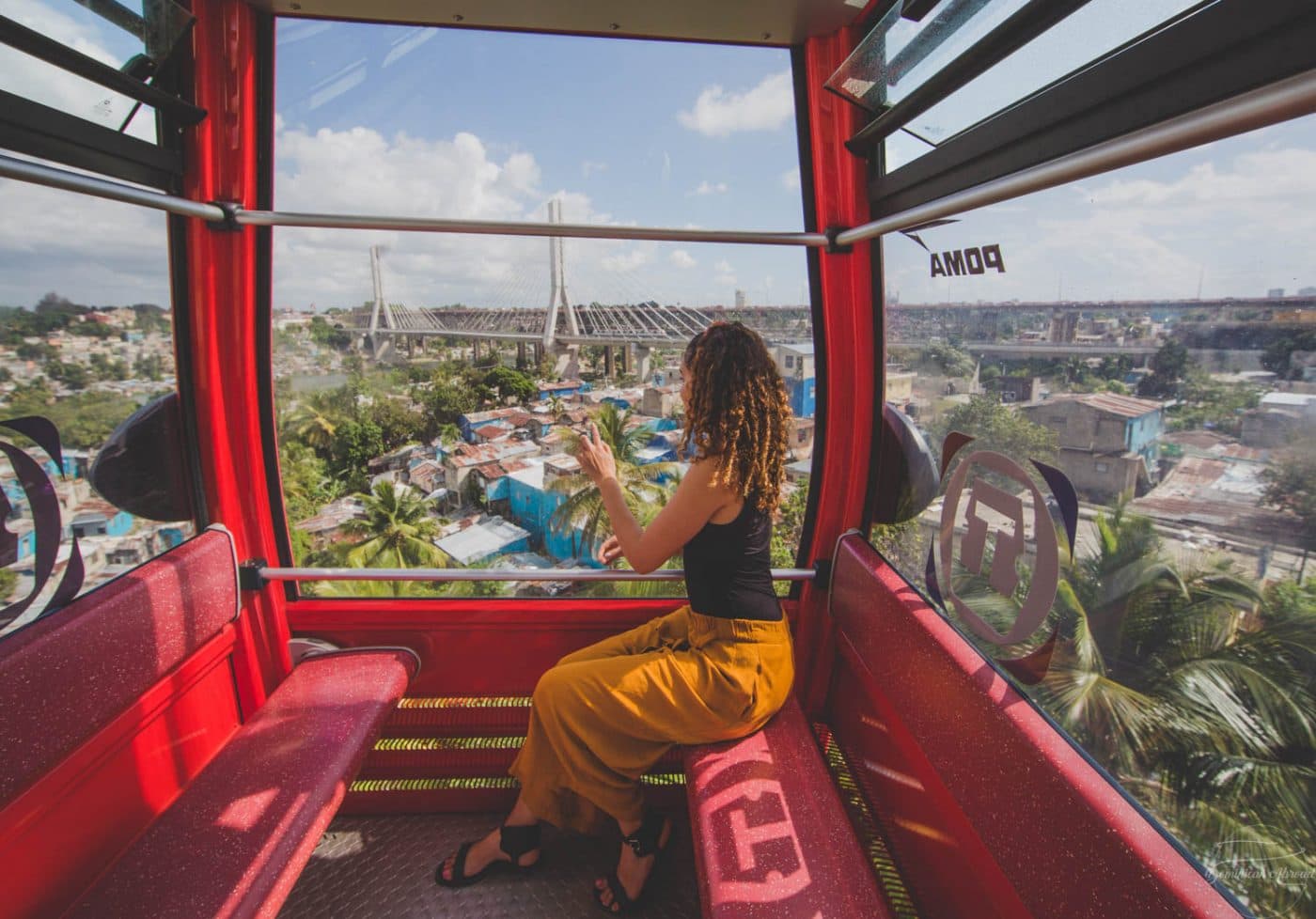
While most crimes in the Dominican Republic happen in Santo Domingo, but it is still a place worth visiting because it is home to some of my many favorite cultural spots and things to do! Just avoid walking and take Ubers between places, unless you’re in La Zona Colonial neighborhood.
Here is my guide on how to move and live in Santo Domingo like I did!
3. It Helps to Know Some Spanish Words

Spanish is a part of the Dominican Republic culture and tradition since it is the country’s main language. Knowing some Spanish words, phrases, and expressions and Dominican slang can elevate not just your general travel experience, but your safety as well.
- Hello → Hola
- Good morning → Buenos días
- Good afternoon → Buenas tardes
- Good evening/night → Buenas noches
- Please → Por favor
- Thank you → Gracias
- Excuse me → Disculpe
- Yes → Sí
- How much does this cost? → ¿Cuánto cuesta esto?
- Where is… ? → ¿Dónde está…?
- The bill, please → La cuenta, por favor
- The menu → El menú
- Help → Ayuda
4. Hire a Tour Guide or a Local Driver!
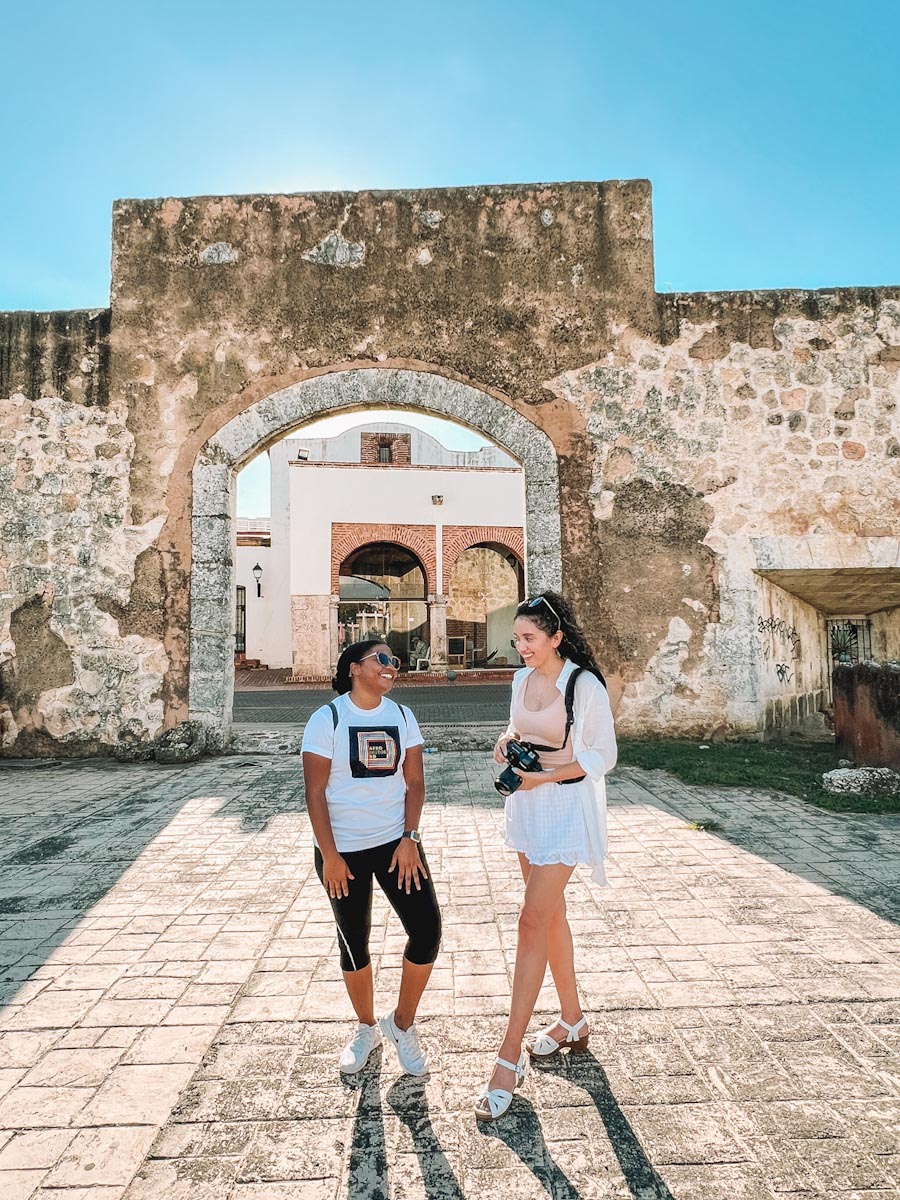

When visiting the Dominican Republic, hiring a tour guide or a local driver can improve your safety and overall travel experience. The country’s diverse landscapes and cultural attractions may be best navigated with the expertise of a knowledgeable guide.
Local drivers, familiar with the roads and traffic conditions, can ensure secure transportation between destinations, particularly if you are unfamiliar with local driving practices.
Local tour guides can also offer valuable insights into historical sites, cultural practices, and hidden gems, minimizing the risk of getting lost or encountering potential safety hazards. Moreover, they often have a deep understanding of the local customs and can provide essential tips on interacting with locals.
5. Packing Right for the Dominican Republic

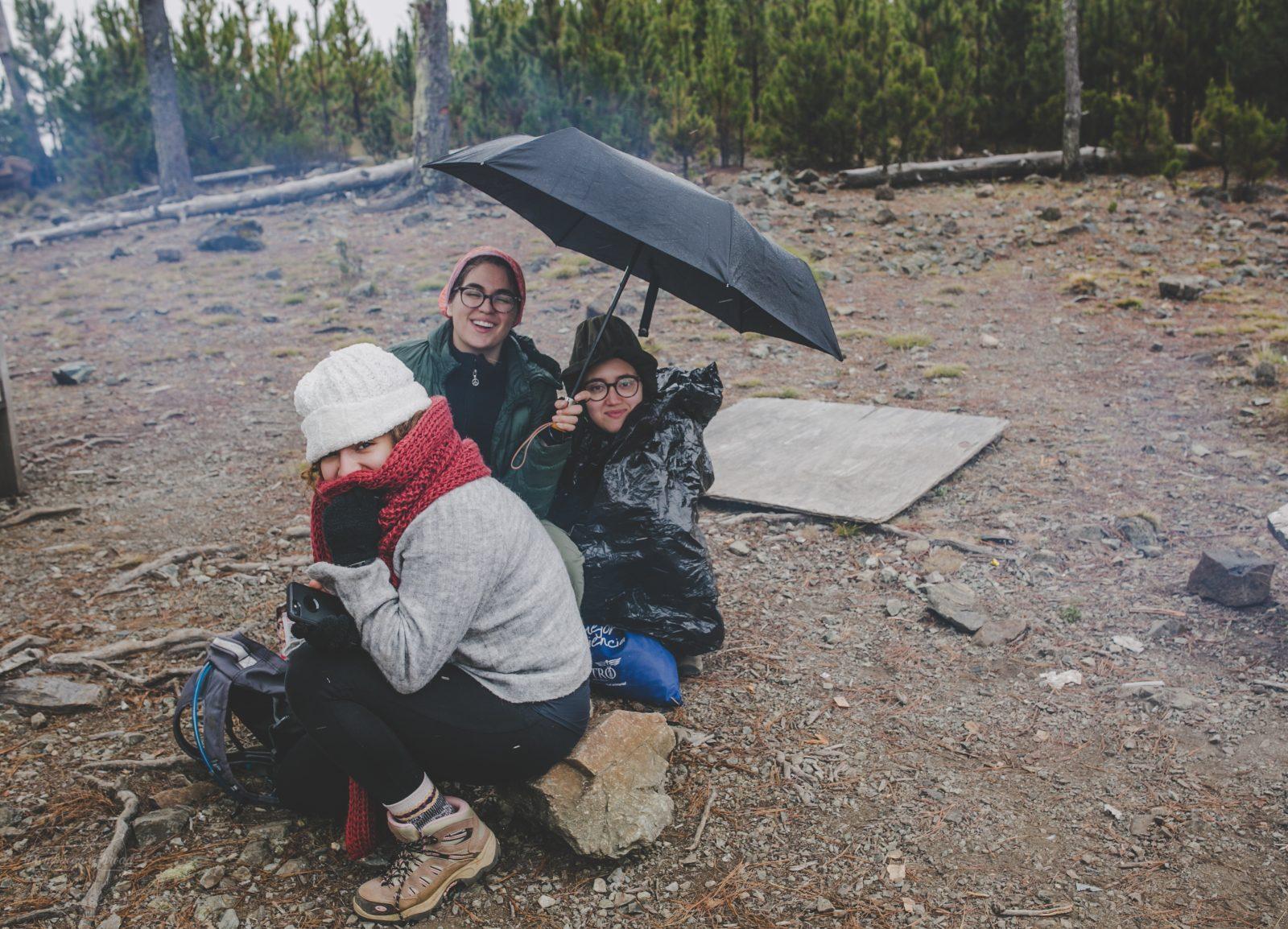
When packing for the Dominican Republic, it is best to bring comfortable, decent, and modest clothes and items only. I recommend the following:
- Bring these natural charcoal pills for your stomach.
- If you’re visiting the Dominican Alps, pack a sweater and some hiking boots.
- If you’re going when the weather is hot, I recommend dressing comfortably with lightweight, breathable, and decent clothing.
- Avoid wearing shorts outdoors at sunset or night to keep mosquitoes at bay.
- If you’re doing lots of water adventures in Dominican Republic beaches, pack water shoes, bathing suits (one-piece or two-piece), a waterproof backpack, a sunhat, and lots of eco-friendly, reef-safe sunscreen.
- If you’re traveling during the rainy/hurricane season, pack an umbrella or a poncho for hikes in the Dominican Republic.
- For long bus rides or flights, packing a warm hoodie is a must.
- Mosquito repellent patches and bracelets.
- Bring a reusable water bottle around to make sure you always have a safe supply wherever you go.
- Use a sling bag to keep your valuables close.
IV. Frequently Asked Questions: Is it Safe to Travel in the Dominican Republic
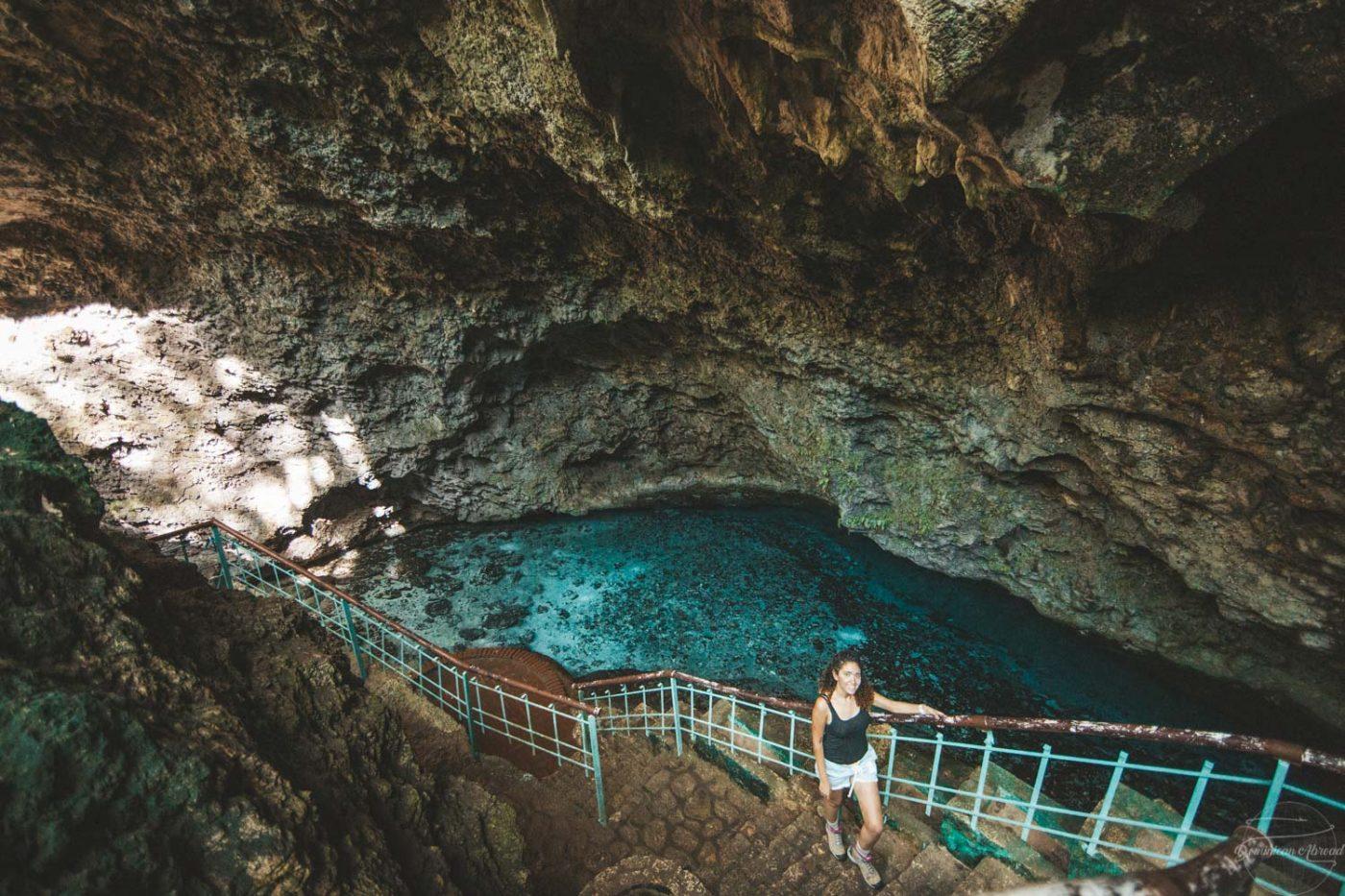
1. Is the Dominican Republic safe for tourists?
Yes, the Dominican Republic is safe for tourists on vacation! Areas like Samana, Punta Cana, Pedernales, Puerto Plata, and beyond are lovely to visit for tourism. But it’s important to be aware that crimes like robbery and pickpocketing can happen. So use common sense!
2. Is the Dominican Republic a high-risk country?
The Dominican Republic is a generally safe country for tourists. However, exercise higher caution in certain neighborhoods of urban areas. Also, be careful what you eat. Avoid salads, ice, and raw meats.
3. Is the Dominican Republic safe for a solo woman traveler?
Yes, the Dominican Republic is safe for female solo travelers. But like everywhere else, it’s best to exercise caution by being more cautious, especially at night.
4. What is the safest vacation spot in the Dominican Republic?
Punta Cana is likely the safest vacation destination in the Dominican Republic, as crime occurrence there is relatively low compared to other areas.
5. Is it safe to go to an all-inclusive resort in the Dominican Republic?
Yes, it is extremely safe to stay in all-inclusive resorts in the Dominican Republic. Some resorts even have increased police force patrolling the beach grounds for extra safety.
6. Is Santo Domingo dangerous?
Santo Domingo’s La Zona Colonial is so safe for tourists that it even has its own tourism police patrolling the streets.
7. Is Punta Cana safe to walk around?
Yes, Punta Cana is safe for walking in the neighborhood or resort. However, everything is spread out so you either need a car or an Uber. Hence, you can take either then walk in the neighborhood of Los Corales. Outside that neighborhood, the vibe is honestly just like being in Orlando, Florida.
8. Can you drink the water in Punta Cana?
Nooooo! Avoid drinking tap water anywhere in the Dominican Republic! I highly recommend even brushing your teeth with bottled water and avoiding ice cubes from restaurants.
V. My Related Dominican Republic Blog Posts
- 48 Fun & Beautiful Things to Do in the Dominican Republic
- 38 Incredible Places to Visit in the Dominican Republic Beyond the Resorts
- 23 Things to Know Before Traveling to the Dominican Republic For the First Time
- 23 Beautiful Waterfalls in the Dominican Republic + How to Visit
- 14 Interesting Islands of the Dominican Republic to Explore
- A Love Letter to the Dominican Heritage Tour by Katherine Carol
- Living in the Dominican Republic? Here’s How to Be a Better Expat
- Understanding Blackness in the Dominican Republic & Are Dominicans Black?
- Healing Dominicanidad: Intergenerational Trauma


